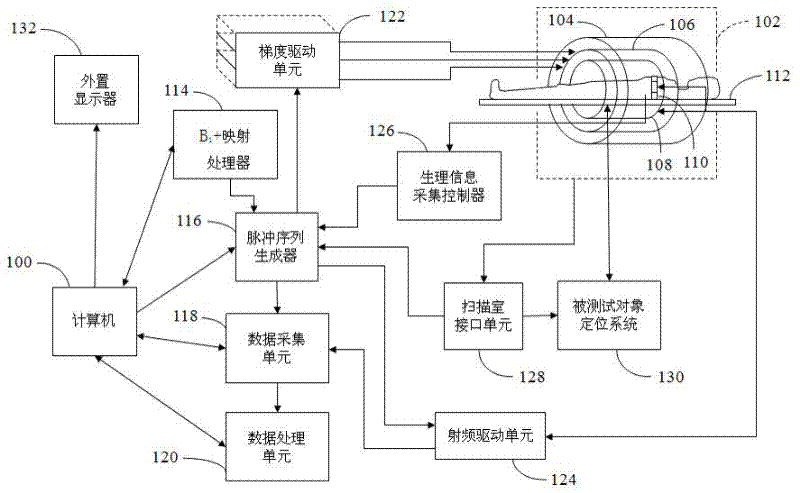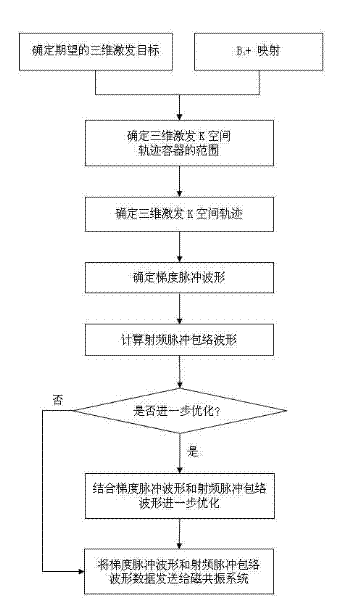A Sequence Design Method for Three-Dimensional Spatially Selective Excitation for Magnetic Resonance Imaging
A technology of magnetic resonance imaging and three-dimensional space, which is applied in the fields of magnetic resonance measurement, application, medical science, etc., to achieve the effect of reducing SAR value, reducing radio frequency energy, and reducing duration
- Summary
- Abstract
- Description
- Claims
- Application Information
AI Technical Summary
Problems solved by technology
Method used
Image
Examples
Embodiment Construction
[0049] The sequence design method of the present invention is applicable to a magnetic resonance system including radio frequency coils (such as array coils) with multiple transmit channels.
[0050] see figure 1 The magnetic resonance system to which the present invention is applicable generally includes a computer 100, a magnetic resonance scanning system 102, a scanning bed 112 capable of adjusting the position of an object under test, a B1+ mapping processor 114, a pulse sequence generator 116, a data acquisition unit 118, a data A processing unit 120 , a gradient driving unit 122 , a radio frequency driving unit 124 , a physiological information collection controller 126 , a scanning room interface unit 128 , a testing object positioning system 130 and an external display 132 .
[0051] The magnetic resonance scanning system 102 mainly includes a main magnet 104 for generating a main magnetic field, a gradient coil 106 for generating a gradient magnetic field, and a radio...
PUM
 Login to View More
Login to View More Abstract
Description
Claims
Application Information
 Login to View More
Login to View More - R&D
- Intellectual Property
- Life Sciences
- Materials
- Tech Scout
- Unparalleled Data Quality
- Higher Quality Content
- 60% Fewer Hallucinations
Browse by: Latest US Patents, China's latest patents, Technical Efficacy Thesaurus, Application Domain, Technology Topic, Popular Technical Reports.
© 2025 PatSnap. All rights reserved.Legal|Privacy policy|Modern Slavery Act Transparency Statement|Sitemap|About US| Contact US: help@patsnap.com



